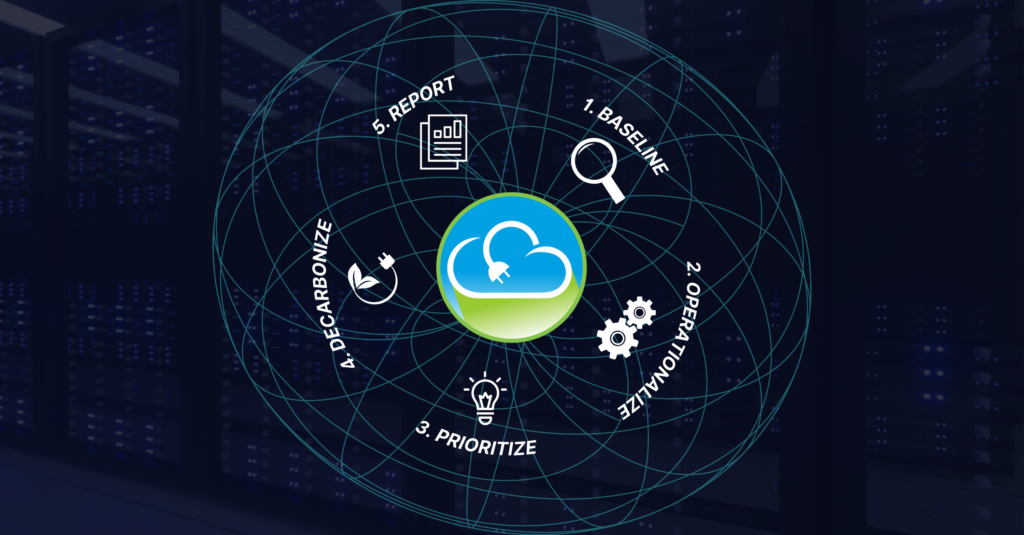What Is Sustainability Software?
Sustainability software is a solution that helps companies manage all environmental data, such as emissions from their energy use, climate information, biodiversity, waste, and finances. Sustainability software is used as a tool for organizations to effectively track and communicate accurate, audited data to stakeholders, investors, and regulators. Sustainability software can greatly impact revenue, company valuation, and brand perception. For this reason, robust sustainability software is a key part of any organization’s sustainability and decarbonization initiatives.
Why Is Sustainability Software Useful?
Utilizing a sustainability software offers many benefits that are invaluable to companies spanning any industry. They provide the opportunity to identify, measure & verify project-specific savings, as well as energy efficiency projects, green energy procurement efforts like RECs contracts, and more. They also provide insights and quality, comprehensive data that is necessary to set tangible energy and sustainability goals for the upcoming years.
Sustainability Software also provides opportunities for significant monetary return on investments. According to a report by the U.S. Department of Energy (DOE), users of an energy and sustainability management platform reported median savings of 17 percent (or $56,000) for 28 individual sites and 8 percent (or $1.3 million) for 9 portfolios. The median five-year energy and sustainability management software procurement cost for a portfolio was $150,000, or $1,800 per monitored point, or $0.06 per square foot. In three out of four cases, the payback on the platform was two years or less.
Optimal Features to Look For:
Not all sustainability software solutions are built equally. While some are built as end-to-end solutions to track every data point across departments, others may only cover specifics of a certain aspect. All in all, here are some of the most optimal features to consider:
Sustainability management software providers should have robust data tracking and reporting capabilities. What specific data points does the sustainability management software you’re considering track? And do you have the capability to create custom KPIs that pertain to your particular use case? Consider the reporting needs of your organization.
A good sustainability software should streamline, automate, and standardize your sustainability reporting process to save as much time as possible for your sustainability team.. For example, WatchWire integrates directly to ENERGY STAR Portfolio Manager, LEED Arc, GRESB, CDP, and more, making it easy to standardize your data collection and improve the readiness of your reporting process.
It is also important for a sustainability software system to have strong analytic capabilities that utilize big data algorithms in place. These help to identify trends, evaluate efficiency projects and reduce the overall performance risk.
Lastly, some sustainability softwares have the ability to rank company assets against a similar subset of the same category to clearly showcase the overall performance of your company in comparison to competitors. WatchWire has a Sustainability Module that ranks your building’s performance against a similar subset of buildings, identifies cost-saving and emissions-reducing energy efficiency improvements, and connects directly to a multitude of sustainability reporting frameworks to ensure easy data uploads and reporting.
How to Generate Savings:
As a sustainability management platform, WatchWire is able to simultaneously monitor your data and audit it for errors. These audits often identify key errors that ultimately result in saving users substantial amounts of money. For example, here are just a few of the error catches that WatchWire has made for our clients recently:
One of the most common billing errors WatchWire encounters is invoices with the wrong monthly kWh consumption. For example, one of our clients saw a substantial increase in energy usage on their statement that did not match their historical usage profile. This catch resulted in a 5% lower bill for their Houston site and a 10% lower bill for their remaining accounts. Had they not been tracking their utility data in the platform, they would not have come to this realization.
Similarly, a university’s energy supplier significantly overbilled their usage for a billing period. The school was billed for 860,930 kWh while their typical usage is around half that amount. Through WatchWire’s invoice management audit process, that invoice was flagged and the university was notified. The supplier canceled the original invoice and rebilled, causing supply costs for that period to decrease from $77,690 to approximately $38,500.
To learn more about WatchWire and its capabilities, you can visit our website, blog, or resource library, request a demo, or follow us on LinkedIn, Instagram, or Twitter to keep up-to-date on the latest energy and sustainability insights, news, and resources.
 Top Sustainability Trends to Watch in 2025
Top Sustainability Trends to Watch in 2025

 Log In
Log In








